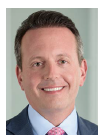Pharmaceutical companies are increasingly embracing social media as a forum for reaching patients. For example, 40% of adults use social media for health-related issues, such as connecting with patients with similar issues. Social forums allow pharmaceutical companies to not only engage with consumers or patients, but also hear what they have to say directly, rather than sifting through external forums to find out what patients are saying, for example, about side effects.
Disease awareness is a particularly popular use of social media for pharma companies. These forums are recognized by companies as good ways to improve knowledge about diseases and to encourage discussion about conditions. Examples include Above MS, which is supported by Biogen; Chron’s & Me, sponsored by UCB; Eczema Exposed supported by Sanofi US and Regeneron Pharmaceuticals; GSK’s Asthma.com; HIV information and support site Stop the Virus sponsored by Gilead; and Speak Your Migraine from Amgen and Novartis, among many others.
In addition, companies have begun supporting wellness sites, such as Merck Engage, to encourage consumers to make healthy choices.
With some diseases, particularly rare diseases, social platforms can prove valuable in connecting geographically dispersed patients and providing them with a voice. Social media groups can also be invaluable in providing patients with a forum for sharing concerns and information.
Overcoming Barriers
The industry has faced several constraints with regards to social media. One is certainly the lack of clear guidelines. While the FDA provided draft guidance on the use of social media, those guidelines haven’t been finalized. However, companies must ensure information about risks is made clear. For example, Duchesnay received a warning letter from the FDA after posts by Kim Kardashian promoting its morning sickness pill Diclegis didn’t mention side effects or risks.
Twitter is considered an excellent two-way communication forum, but again lack of guidance leaves companies uncertain as to how to embrace it, at least when it comes to speaking about their products.
In a conversation on this issue with Forbes, cardiologist and blogger Dr. Kevin Campbell warned that pharmaceutical companies would have to tread carefully when hosting any commercially driven discussion and be aware that during recalls or negative press, they could open themselves to legal issues.
The good news, however, is that as of mid-November 2017 the Office of Prescription Drug Promotion (OPDP) had issued only two enforcement letters on marketing communications, showing a marked drop in such activity from the regulators. While these letters aren’t specific to social media, they do indicate a positive trend generally.
Media forums themselves have sometimes created barriers for the industry. For example, in 2011 Facebook announced that all Facebook pages would have to allow comments. This resulted in companies removing many disease-state groups because they lacked the mechanisms and resources to handle comments and remain in compliance. Facebook later rescinded the requirement; however, pharmaceutical companies struggle to find a way to effectively communicate with patients in such forums.
Another barrier has been uncertainty over communicating directly with patients, and in particular, concerns over how those patients will react.
Best Foot Forward
Statistics show that pharma is tapping into social media, albeit more slowly than other industries. Research company eMarketer estimated that in 2016 pharma and healthcare marketers spent $1.64 billion on mobile and online advertising, but projected that would rise to $2.55 billion by 2019.
The social media companies themselves are looking at how to engage pharma companies from a commercial point of view. On June 6, 2017, Facebook hosted a Health Summit for pharmaceutical marketers, and the organization is looking at changes it needs to make to cater to pharmaceutical companies, which increasingly are moving ad budgets from television to digital media.
Google and Twitter have been tapping into the market for a while, hiring teams to focus on pharmaceutical ad campaigns.
 Experts in social media advise pharma companies new to social media to take the plunge because patients and caregivers are eager to use these forums to engage. Those new to social platforms might be best advised to start with well-traveled forums such as Facebook and working closely with medical, legal, and regulatory teams to avoid any nasty surprises later. Another sound approach is to start in one disease area and learn as they go.
Experts in social media advise pharma companies new to social media to take the plunge because patients and caregivers are eager to use these forums to engage. Those new to social platforms might be best advised to start with well-traveled forums such as Facebook and working closely with medical, legal, and regulatory teams to avoid any nasty surprises later. Another sound approach is to start in one disease area and learn as they go.
Companies are also advised to measure the effectiveness of their social media campaigns, especially when it comes to branded campaigns. To avoid falling foul of regulators, some experts recommend companies develop a controlled environment, such as a website for a product, to ensure information is accurate. But if companies provide a patient chat room they may face obligations to correct misinformation.
Social media market intelligence firm Unmetric assessed the metrics, content, and campaigns of 15 brands in terms of social media presence and found most brands put efforts into just a few channels, that fan base is less important than the ability to expand that base, and that reach and impressions don’t correlate with frequency of posting.
Leading the Way
Despite concerns, many pharma companies do recognize the value of social media as a way to reach patients whether in a non-branded way to open the conversation on disease states, or — though less so — from a more commercial perspective.
Some companies have appointed digital leads to advance their social positioning, including: Biogen, which has a head of digital strategy; Sanofi US, which has a head of digital intelligence and connected marketing; Boehringer Ingelheim, with a senior digital manager; and Takeda, with a head of digital acceleration, to name a few.
One of the most successful campaigns was Boehringer Ingelheim’s post during Brain Awareness Week in March 2016, which included a puzzle to highlight cognitive tasks. The post marked the company’s foray into the therapeutic area of CNS, including mental illness.
One strong proponent of social media is Ron Cohen, M.D., CEO of Acorda Therapeutics, who started a digital-innovation-and-strategy group at the company. This has led to several innovations, including a self-help application called MS self that lets users track metrics related to their health. The company is also using digital technology to recruit patients for clinical trials, using multichannel methods to find patients with a condition and inform them of the clinical trials, and providing click throughs so patients can find out more.
Another company looking at social networks for patient recruitment is Bioverativ, which has turned to MyHealthTeams to better understand the unmet needs of hemophilia patients and potentially get them into trials for an upcoming hemophilia drug. Once it gathered input, the company designed its trial to address unmet needs by gauging two key issues raised: continued pain and help with depression.
Companies must take a considered approach to their social media. Sandra Velez, content strategy leader at Merck, says companies must understand their customers’ needs, have two-way conversations with them, and be on channels that customers expect them to be on. She emphasizes the importance of creating a customer persona and understanding that their emotional needs will vary depending on their persona — patient, provider, or payer, for example.(PV)
~~~~~~~~~~~~~~~~~~~~~~~~~
Executive viewpoints
 Dara Liguori
Dara Liguori
Digital Engagement Strategist
Ogilvy CommonHealth Worldwide
Social Engagement
Successful patient engagement begins with a deep understanding of your audience. Listen to your patients, study how they interact with one another on social platforms, and build a program around their needs and interests. This level of understanding will help you drive content and conversations that feel authentic and begin to establish trust. Ongoing engagement is fostered through open dialogue and consistent interaction. Give patients a reason to stay connected with you over time.
 Joe Youssef
Joe Youssef
Digital Engagement Strategist
Ogilvy CommonHealth Worldwide
Understanding your Customers
Developing impactful and integrated social media campaign requires a S.M.A.R.T (specific, measurable, achievable, realistic) objective. This is the North Star to all associated activities for your integrated campaign. It also requires keeping a finger on the pulse of your customer. Without truly understanding the people you are trying to reach, your communications will not be as efficient and effective as you’d like.
~~~~~~~~~~~~~~~~~~~~~~~~~
Social Media Enhances My Interactions with Customers
 As a young executive at Schering-Plough, I learned a lot from Fred Hassan about the importance of “being connected" and “tuning in" to customers by spending time with them and our front-line sales teams. It was the best way to understand their experience with our products, identify things that we could do to improve patient care and formulate new ideas for business and product innovation.
As a young executive at Schering-Plough, I learned a lot from Fred Hassan about the importance of “being connected" and “tuning in" to customers by spending time with them and our front-line sales teams. It was the best way to understand their experience with our products, identify things that we could do to improve patient care and formulate new ideas for business and product innovation.
Fast forward nearly 15 years, as CEO of Allergan I remain 100% committed to this model. Those customer and front-line relationships are more important to me than ever, but my time is also more limited than ever.
Luckily, social media sites like Twitter, LinkedIn, and Instagram have emerged as valuable tools for CEOs to stay connected with their customers, colleagues, and business partners. But I can tell you that they are some of the most underutilized tools in the arsenal of today’s leaders. It’s not just for news folks. Many CEOs fall into one of several social media traps: some avoid it, some use it as one-way communication, or relegate social media to the communications department to watch over. And, sometimes they let others dictate the messaging, which may result in an authenticity gap that dilutes the impact of communications with stakeholders.
However, some have already learned a lesson that is now becoming more clear to me as I have explored social media.
Social media is a multiplier for my customer and team interactions! Social media virtual visits make it possible for me to interact with customers more frequently, and they extend my reach to customers that I have not had a chance to meet in person, yet. By using Instagram and Twitter, I can follow a broad array of customers – those who use our aesthetic products as well as those who use our eye care, GI, and other therapeutic treatments. I see what they are doing in their practices. I see how they are using our products and our competitors’ products. By seeing who they are following — and adding some to the list of people I follow — I also gain added perspective about our target consumers. I even gather insights that help us correct misconceptions, and, importantly, I gain a deep appreciation for their entrepreneurialism. It also puts me in a position to know if we have a customer who has a problem — and we can deal with it quickly. Best of all, our customers know I am following them and taking an active interest in their business.
I’m fortunate that Allergan’s business, particularly our aesthetic products, put us in a unique position. These customers are inclined to use social media for their business purposes, with medical aesthetics practitioners at the leading edge of this movement. It is an understatement to say that I learn something new every day by interacting with our customers on Instagram.
Social Media will never replace my face-to-face visits with customers, but it is dramatically expanding the opportunities for me to interact with customers and colleagues. Maybe it is time for more CEOs to get into the mix.
While you are thinking about it, you can follow me on twitter @BrentLSaunders and Instagram @brentlsaunders.
Editor’s Notes: Blog originally published on Dec. 15, 2017; Mr. Saunders is a PharmaVOICE 2009 and 2017 honoree.

















